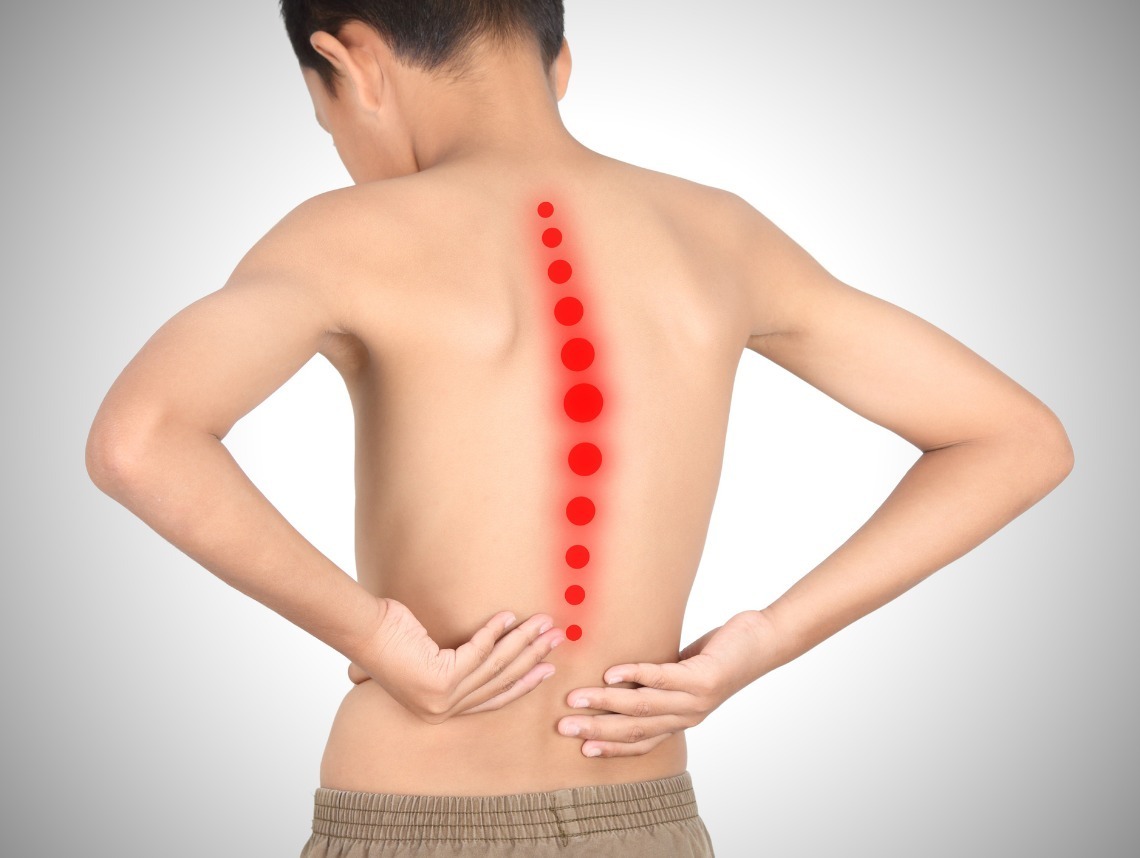Your spine is the backbone of your mobility — literally. That’s because your spine allows you to bend, twist, and stretch daily. But, when your spine is abnormally curved in the lower back, it’s known as hyperlordosis. In severe cases, this curve can cause pain and restrict certain activities. Not only is this frustrating, but in children, it can limit their ability to be a kid. That’s why diagnosing and treating hyperlordosis is crucial to ensuring the best life for your child.
What is hyperlordosis?
Hyperlordosis is also known as lordosis and swayback. While the spine has a natural curvature to it, hyperlordosis is diagnosed by an exceptionally large curve in the lower back. Other forms of spine curvatures include kyphosis (upper back) and scoliosis (side to side).
Hyperlordosis can be caused by many things. When a child is born with lordosis, it’s typically caused by genetics. But, other disorders can cause the condition, including:
- Injuries to the spine
- Congenital disabilities
- Spondylolisthesis
- Achondroplasia (Dwarfism)
- Muscular dystrophy
- Cerebral palsy
Types of Hyperlordosis
There are five different types of lordosis. The type depends on the cause of the condition, severity, and which vertebrae are affected.
1. Postural Lordosis
When a person carries too much weight in the stomach area, it can pull the back forward. If their back muscles are weak, then they won’t be able to support the spine, and the pull from the weight causes the spine to curve forward.
2. Congenital & Traumatic Lordosis
Trauma or an injury to the connecting links of the spine can cause them to break, resulting in pain in the lower spine — caused by sports injuries or car accidents. If not healed properly, the vertebrae involved can slip forward and pinch nerves.
3. Post-Surgical Laminectomy Hyperlordosis
A laminectomy is a surgical procedure where parts of the vertebrae are removed to give access to the spinal cord or nerve roots — typically done to remove spine tumors in children. This surgery can cause the spine to become unstable and results in a hyperlordotic position.
4. Neuromuscular Lordosis
This type of hyperlordosis is caused by various conditions or disorders that affect the nervous system. It’s the type most commonly seen with muscular dystrophy, cerebral palsy, and other conditions.
5. Lordosis Secondary to Hip Flexion Contracture
This unique type occurs when the spine is pulled out of alignment by the hip. This contracture can be caused by infection, injury, or muscle imbalance issues from various disorders.
Hyperlordosis Symptoms
Hyperlordosis symptoms can be different for each child. But, the main sign that your child may have the condition is if their buttocks are more prominent. You can determine this by lying your child face-up on a flat service and looking for the gap in their lower back. Hyperlordosis will have a semi- to fully-visible gap between their lower back and the flat surface. In severe cases, your child may experience pain in their lower back.
How is hyperlordosis diagnosed?
To determine if your child has hyperlordosis or another spine abnormality, your pediatrician will go over your child’s health history and conduct a physical exam to see if there is a gap between their lower back and a flat surface. If the curvature is slight, additional testing may be required, including:
- X-rays
- Bone scans
- MRI
- CT scan
- Blood tests
Hyperlordosis Treatment Options
Once diagnosed, your pediatrician will create a treatment plan for your child. This plan will depend on your child’s symptoms, age, general health, and the severity of the condition. In some cases, hyperlordosis can go away on its own. But, if your child has pain or trouble standing up straight, then treatment plans involving exercise to return flexibility are necessary. The goal of treatment is to prevent the curvature from getting worse. With that in mind, plans may include:
- Observation and repeated exams
- Exercises to promote good posture and muscle strength
- Treatment of other health problems
- Surgery
Caring for a Child with Hyperlordosis
If your child suffers from hyperlordosis, the most important thing you can do is to help them follow their treatment plan. Whether it’s taking them to follow-up appointments or helping them exercise, your child may need additional assistance to live their best life. If you notice them using poor posture, make it a game to practice sitting up straight.
If your child’s other conditions are causing their swayback, then you may need to administer medications, monitor their breathing while they sleep, and help them with everyday functions — such as eating, bathing, and getting dressed. If you have other children in the home who also need your assistance, pediatric home health care can help you care for your child while you juggle your other responsibilities.
Contact Care Options for Kids for Home Health Care
It can be hard to balance your time between work, home, and caring for a child. That’s why our team of professionals at Care Options for Kids is here to help.
Our home health care services offer support in the comfort of your home. We refer loving and competent nurses to provide customized care for families — from a few hours a day to around-the-clock supervision. Contact us directly to speak with a home health care professional or request a free in-home assessment. Together we can determine the best plan of action to keep your loved ones happy and healthy.
If you or a loved one are considering Pediatric Home Health Care services, contact the caring staff at Care Options for Kids. Call today at (888) 592-5855.






